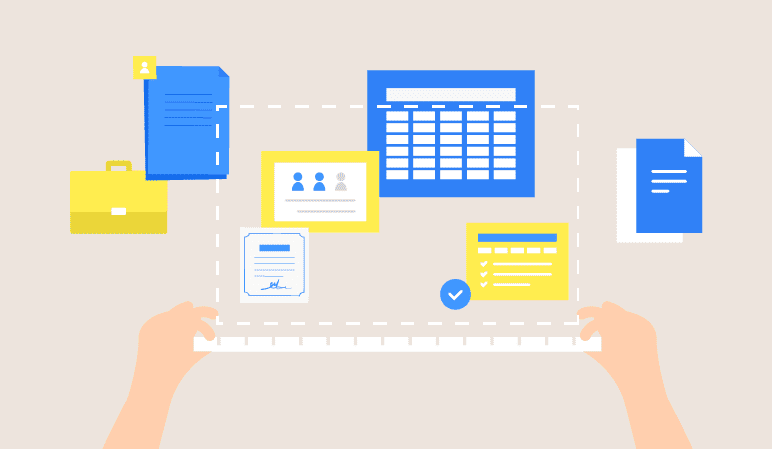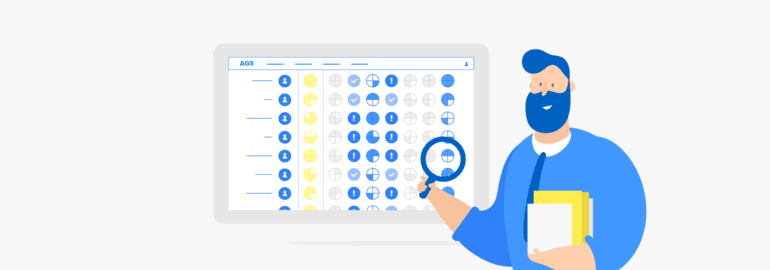How to perform optimal competency management in 2023
When we talk about competencies in a business setting, we are talking about the attributes and abilities necessary for a job, or task, to be completed to a high standard. When it comes to competency management, though, there is a little more involved. This article will run you through the following: what competencies are in a business setting how to...


When we talk about competencies in a business setting, we are talking about the attributes and abilities necessary for a job, or task, to be completed to a high standard. When it comes to competency management, though, there is a little more involved. This article will run you through the following:
- what competencies are in a business setting
- how to go about managing the competencies within your organization
- how efficient competency management can benefit you
Competency management: what is competency? Copied
The terms skills and competencies are often seen as being synonymous, which isn’t entirely true as there is a slight difference between the two:
A skill is a person’s granular ability to perform a specific task, whereas a competency is more well-rounded and covers not only someone’s ability but also their attitude.
Very simply, if someone is competent at a task, they no longer ask as they have:
- attitude – a keen commitment and positive mindset to the work
- skill – a highly developed aptitude to perform a task
- knowledge – a demonstrated know-how and expertise in the task at hand
The good news is that even though there’s a slight difference, there isn’t any harm in using them interchangeably. The main thing is to ensure that every skill/competency in your organization is quantifiable and objective. This way, you can easily manage them. You’ll also quickly see the benefits if you place competency management at the heart of your Human Resource Management Policies.
Download our white paper on the topic to see precisely how.
Different competencies for different job requirements
A business wouldn’t be that effective if every employee at every level held the same skill sets or was just as competent at the same tasks. Business is not a one shoe fits all scenario. It’s essential to stay well informed of all your business and role-specific needs by actively competency mapping for all roles. As your business evolves, so must your aptitude in handling it.
Good competency management – or Success Profiles, as it’s sometimes called – needs to be divided not only by role but also by demographic. Doing so will add value to each of your stakeholders:
- Senior Leaders
- Not only do leaders of any organization need to be competent at their tasks, but they also need to have a firm overview of the collective competencies within their company. Senior Leaders must ensure that business needs are continually being met.
- Managers
- Managers must also take charge of collaborative competencies as they build and lead their teams to success. Whether directing projects or ensuring smooth day-to-operations, management needs to ensure that every team member is competent and compliant with their tasks.
- Employees
- Employees must manage their competencies and be aware of how they align with business needs. It is beneficial for companies when employees can visually see their skills development. Employees become more engaged and productive at their tasks when they are involved with their learning and development.
- Human Resources
- Good competency management is vital for the HR department of any company. As HR takes charge of recruitment, onboarding, performance reviews, and training developments, they must be well-informed of business needs and individual competencies. HR’s job is to ensure that no skills or competency gaps arise within their place of work.
Framework for competency development
Even though there are different competencies for different roles, when it comes to managing development, there is a four-step routine that can be applied to all organizational stakeholders.
Step 1: Preparation
During the initial planning stage, it is crucial to identify the goals you want to reach. Once you have a goal in place, you can determine the skills and competencies that will get you there.
Step two: collecting information
This is the research stage, and there are a few ways to collect the data needed for your competency management. Observation and employee surveys are good starting points if you want to develop competencies within an existing role or team. But for a new role or team, market and business analysis is usually a better option.
Step three: building the framework
Once you have collected all your data, you need to log it to create a framework. Again, it is essential to group and divide the data logically, otherwise, when it comes to using it, you may find your records challenging to manage.
Step four: implementing the framework
When you have a clear and organized competency framework, you are ready to get the ball rolling with your plan. It’s best to be transparent and honest when discussing competencies with every involved party. Doing so will ensure that everyone is on the same page every step of the way.

Benefits of running strong competency management
Copied
There are loads of benefits to running a solid competency management system. These benefits can be split into three areas: optimized day-to-day operations, cost reduction, and contingency planning.
Optimized day-to-day operations
- Managing competencies effectively will optimize the daily operations within your business. A good competency framework makes it easy to identify when and where a competency gap can occur.
- It also empowers employees as they can take charge of their training journey.
- Audit panic will become a thing of the past, as your competency framework has the information to keep you compliant every time.
Cost reduction
- Reduces onboarding costs – which, according to Gallup, can cost anywhere between $25,000 – $100,000. – You can be sure to recruit the right talent the first time.
- Employee retention rates will also improve. New starters will be fully aware of the job they’re moving into primarily. But they will also feel more valued when their development is being invested.
Contingency planning
- Good competency management will also help you stamp out any skills gaps in the future. A good framework will provide insight, so you can always stay at the top of your game.
- It becomes much easier to create leaders from within your organization. You’ll be able to see the rate that an individual has excelled and know how their ability aligns with new opportunities.
Tools that help: competency management system
Copied
The easiest way to handle all your competency data is by running a competency management system. A good system will help organizations manage and develop all skills and competencies at the individual and organizational levels.An efficient competency management system can track and identify any skills gaps before they can arise. This ensures that a business stays market-ready, whatever challenges or changes the industry brings. At the same time, a competency management system, like AG5 Skills Management Software, allows you to create matrices to see where and when to implement any training or upskilling activities. These matrices also benefit day-to-day operations, providing the information needed to juggle task forces. Schedule your live remote demo.
Book a free demo to see how AG5 could help you track your skills.
